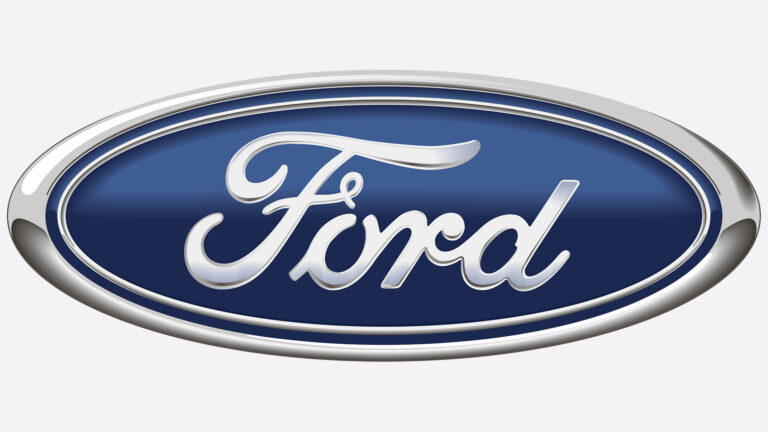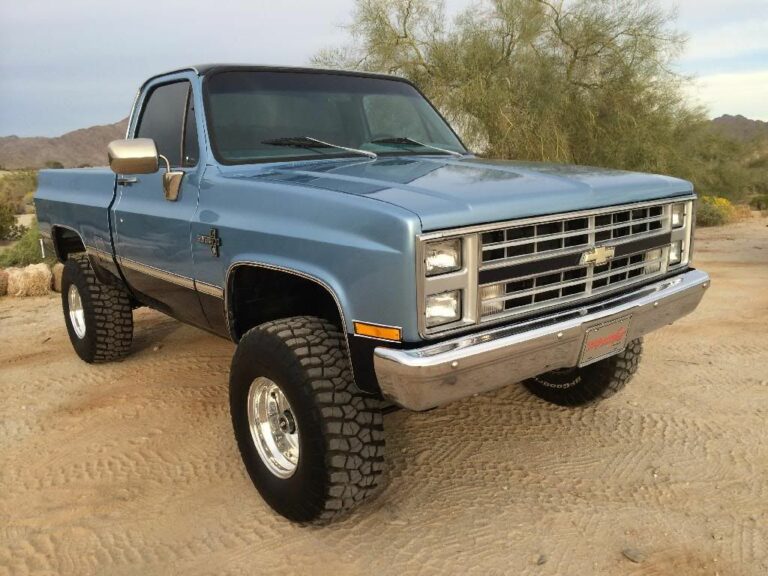The Car-Truck Conundrum: Understanding Modern Crossovers and Unibody Pickups
The Car-Truck Conundrum: Understanding Modern Crossovers and Unibody Pickups cars.truckstrend.com
In the evolving landscape of automotive design, a fascinating hybrid has emerged, blurring the lines between traditional sedans, SUVs, and pickups. This category, which we affectionately term the "car bit of a truck," represents a significant shift in consumer preferences, prioritizing versatility, comfort, and efficiency without fully sacrificing utility. From the ubiquitous crossover utility vehicle (CUV) to the resurgent unibody pickup, these vehicles offer a compelling proposition: the nimble handling and fuel economy of a car, coupled with a touch of the ruggedness and cargo capacity associated with a truck.
This article delves deep into this dynamic segment, exploring what defines these vehicles, their myriad benefits, and how they’ve come to dominate the market. Whether you’re a first-time buyer or looking to understand the nuances of these popular models, we aim to provide a comprehensive guide to navigating the "car-truck" conundrum.
The Car-Truck Conundrum: Understanding Modern Crossovers and Unibody Pickups
What Exactly is a "Car-Truck"? Defining the Crossover and Unibody Pickup
The term "car-truck" isn’t an official automotive classification, but it perfectly encapsulates the design philosophy behind two prominent vehicle types: Crossover Utility Vehicles (CUVs) and Unibody Pickups.
At their core, CUVs are built on a car-like unibody chassis, similar to a sedan or hatchback, rather than the heavier, truck-like body-on-frame construction of traditional SUVs (e.g., Jeep Wrangler, Chevrolet Tahoe). This unibody construction means the vehicle’s body and frame are a single, integrated unit, leading to several advantages:
- Lighter Weight: Generally results in better fuel efficiency and easier handling.
- Improved Ride Comfort: Independent suspension, common in car platforms, provides a smoother, more refined ride.
- Car-like Driving Dynamics: Less body roll, more precise steering, and easier maneuverability in urban settings.

CUVs typically offer higher ground clearance than sedans, an elevated driving position, and often come with all-wheel drive (AWD) options, providing enhanced traction in varied conditions without the heavy-duty capabilities of a true 4×4 system. Their enclosed cargo areas are accessed via a liftgate, similar to a hatchback, making them ideal for families, groceries, and gear.
Unibody Pickups, on the other hand, take the car-based platform and integrate an open cargo bed. Examples like the Ford Maverick and Hyundai Santa Cruz are modern interpretations of a concept that has existed for decades (think Chevrolet El Camino or Ford Ranchero). These vehicles offer:
- Open Bed Utility: Ideal for hauling dirt, bikes, gardening supplies, or items too dirty or bulky for an enclosed trunk.
- Compact Footprint: Easier to park and navigate than full-size trucks.
- Fuel Efficiency: Significantly better than traditional body-on-frame pickups due to lighter construction and smaller engines.
- Comfortable Interior: Often share interior components and amenities with their car counterparts, providing a more refined cabin experience.

Both CUVs and unibody pickups represent a pragmatic solution for drivers who need more utility than a sedan but don’t require the full-blown towing and off-road prowess (or the associated fuel costs and larger footprint) of a traditional truck or SUV.
The Appeal: Why Drivers Choose the "Car-Truck" Hybrid

The meteoric rise of "car-truck" vehicles isn’t accidental. They tap into a sweet spot for a vast segment of the population, offering a compelling blend of advantages:
- Superior Driving Dynamics & Comfort: Built on car platforms, these vehicles offer a significantly smoother ride and more responsive handling than traditional body-on-frame trucks or SUVs. They feel more nimble, making urban driving and parking less of a chore.
- Enhanced Fuel Efficiency: Lighter construction and more efficient engines mean better miles per gallon (MPG) compared to their larger, heavier counterparts. This translates to lower running costs and reduced environmental impact.
- Unrivaled Versatility:
- CUVs: Offer generous passenger space, flexible cargo areas with fold-flat seats, and easy access through a large liftgate. They’re perfect for family road trips, grocery runs, and weekend adventures requiring gear.
- Unibody Pickups: Provide the open-bed utility of a truck for dirty or bulky items, combined with the comfortable, enclosed cabin of a car for passengers. They’re ideal for DIY projects, outdoor enthusiasts, or small business owners.
- Maneuverability: Their more compact dimensions (compared to full-size trucks/SUVs) and car-like steering make them easier to navigate tight city streets, crowded parking lots, and garages.
- Perceived Safety & Elevated Driving Position: Many drivers feel safer in a vehicle with a higher vantage point, offering better visibility of the road ahead. Modern "car-trucks" also come equipped with a suite of advanced safety features, often achieving excellent crash test ratings.
Types and Categories: Navigating the "Car-Truck" Landscape
The "car-truck" segment is incredibly diverse, offering options for nearly every lifestyle and budget:
- Subcompact CUVs: These are the smallest and most urban-friendly, often sharing platforms with subcompact cars.
- Examples: Honda HR-V, Hyundai Kona, Mazda CX-30.
- Best For: City dwellers, young professionals, light cargo needs.
- Compact CUVs: The most popular segment, offering a balanced blend of space, efficiency, and features.
- Examples: Toyota RAV4, Honda CR-V, Nissan Rogue, Subaru Forester, Hyundai Tucson.
- Best For: Small families, commuters, general-purpose use.
- Mid-size CUVs: Larger options, often with available third-row seating, providing more passenger and cargo capacity.
- Examples: Kia Telluride, Hyundai Palisade, Honda Pilot, Toyota Highlander, Ford Explorer (now unibody).
- Best For: Growing families, those needing occasional third-row access, road trips.
- Full-size CUVs: The largest unibody vehicles, offering maximum interior space, often comparable to traditional full-size SUVs but with better road manners.
- Examples: Chevrolet Traverse, Volkswagen Atlas, Buick Enclave.
- Best For: Large families, those prioritizing maximum interior volume and comfort.
- Unibody Pickups: A growing niche, blending sedan comfort with open-bed utility.
- Examples: Ford Maverick, Hyundai Santa Cruz.
- Best For: Urban adventurers, DIY enthusiasts, light hauling, those who need an open bed but not a full-size truck.
Key Considerations When Buying a "Car-Truck"
Choosing the right "car-truck" involves carefully evaluating your specific needs and priorities:
- Needs Assessment:
- Cargo Capacity: How much stuff do you regularly haul? Do you need an enclosed space (CUV) or an open bed (unibody pickup)?
- Passenger Count: How many people will you typically carry? Do you need two rows or three?
- Towing/Payload: While better than a car, "car-trucks" have limited towing and payload capacities compared to traditional trucks. Be realistic about what you need to pull or carry.
- Off-Road Capability: Most CUVs and unibody pickups are designed for light trails and adverse weather, not serious off-roading. If true off-road capability is crucial, a body-on-frame SUV or truck might be better.
- Powertrain: Consider engine size, horsepower, and torque. Many models offer hybrid or plug-in hybrid (PHEV) options for even greater fuel efficiency, and a growing number are available as fully electric vehicles (EVs). Decide between Front-Wheel Drive (FWD) for maximum efficiency or All-Wheel Drive (AWD) for better traction.
- Features and Technology: Prioritize infotainment systems, advanced driver-assistance systems (ADAS), comfort features (heated seats, sunroof), and connectivity options.
- Budget: Look beyond the sticker price. Factor in fuel costs, insurance premiums (which can vary by vehicle type and safety features), maintenance, and potential resale value.
- Test Drive: Never skip the test drive. Drive multiple models, including ones you might not initially consider. Pay attention to ride comfort, acceleration, braking, visibility, and how easy it is to park.
Maintenance and Ownership Tips for Your "Car-Truck"
Owning a "car-truck" is generally similar to owning a car, but a few considerations are specific to their design:
- Adhere to Service Schedules: Regular oil changes, tire rotations, and fluid checks are crucial for longevity. Consult your owner’s manual for specific intervals.
- Tire Care: Proper tire pressure is vital for fuel economy and handling. Regular rotation and alignment checks are especially important for CUVs and unibody pickups, as uneven wear can affect stability and tire life.
- Understand AWD/4WD Systems: If your vehicle has AWD, be aware of its limitations. It’s designed for improved traction on slippery surfaces, not for heavy off-roading or deep mud. Some systems require specific maintenance (e.g., differential fluid changes).
- Respect Payload and Towing Limits: Overloading your CUV or unibody pickup can damage the suspension, drivetrain, and even compromise braking ability. Always stay within the manufacturer’s specified limits.
- Interior and Exterior Protection: With more cargo hauling and potentially outdoor activities, consider durable floor mats, cargo liners, and bed liners (for pickups) to protect the interior and bed from wear and tear. Regular washing helps protect the exterior finish.
Challenges and Solutions
While "car-trucks" offer many advantages, they aren’t without their limitations:
- Limited Off-Road Capability:
- Challenge: Most CUVs lack the ground clearance, robust suspension, and low-range gearing of true off-road vehicles.
- Solution: If off-roading is a priority, consider a more rugged CUV (e.g., Subaru Outback, some higher trims of RAV4/CR-V) or accept that these vehicles are best suited for paved roads and light trails.
- Lower Towing/Payload Capacity:
- Challenge: They cannot tow or carry as much as traditional body-on-frame trucks or large SUVs.
- Solution: Accurately assess your towing and hauling needs. For heavy-duty work, a full-size truck is indispensable. For lighter tasks, a "car-truck" is perfectly adequate.
- Perceived Lack of "Truck Cred":
- Challenge: Some traditionalists might not view unibody pickups as "real trucks."
- Solution: Focus on the practical benefits and cost savings. For many, the utility offered by these vehicles is more than sufficient without the compromises of a larger truck.
- Market Saturation:
- Challenge: The sheer number of models can make choosing overwhelming.
- Solution: Thorough research, comparison shopping, and extensive test drives are key to finding the perfect fit.
Representative Pricing for Popular "Car-Truck" Models (MSRP Ranges)
Please note: These prices are approximate Manufacturer’s Suggested Retail Prices (MSRPs) for new vehicles in the U.S. and can vary significantly based on trim level, options, region, dealer markups, and current market conditions. They do not include destination fees, taxes, or registration.
| Category | Example Models (Common) | Starting MSRP Range ($) | Max MSRP Range (High Trims) ($) |
|---|---|---|---|
| Subcompact CUV | Honda HR-V, Hyundai Kona, Mazda CX-30, Chevy Trax | 24,000 – 27,000 | 30,000 – 36,000 |
| Compact CUV | Toyota RAV4, Honda CR-V, Nissan Rogue, Subaru Forester | 29,000 – 33,000 | 38,000 – 45,000+ |
| Mid-size CUV | Kia Telluride, Hyundai Palisade, Honda Pilot | 37,000 – 42,000 | 50,000 – 60,000+ |
| Full-size CUV | Chevrolet Traverse, VW Atlas, Buick Enclave | 38,000 – 44,000 | 55,000 – 65,000+ |
| Unibody Pickup | Ford Maverick, Hyundai Santa Cruz | 24,000 – 29,000 | 35,000 – 45,000+ |
Disclaimer: Prices are estimates and subject to change. Always check official manufacturer websites and local dealerships for current pricing.
Frequently Asked Questions (FAQ)
Q1: Are CUVs as safe as traditional SUVs or trucks?
A1: Modern CUVs are built on car platforms and often incorporate advanced safety features and crumple zones, leading to excellent crash test ratings from organizations like the IIHS and NHTSA. In many cases, they are just as safe, if not safer, than older body-on-frame SUVs.
Q2: Can "car-trucks" go off-road?
A2: Most CUVs and unibody pickups are designed for light off-road use, such as gravel roads or mild trails, especially those with AWD. They are not built for serious rock crawling or deep mud. If true off-road capability is a must, look for vehicles with higher ground clearance, robust 4×4 systems, and specialized off-road features.
Q3: What’s the main difference between a CUV and a traditional SUV?
A3: The fundamental difference lies in their construction. CUVs use a unibody (car-like) construction where the body and frame are integrated, offering better ride comfort and fuel economy. Traditional SUVs use a body-on-frame (truck-like) construction, which is heavier but generally allows for higher towing capacity and more rugged off-road capability.
Q4: Are unibody pickups "real trucks"?
A4: This is a matter of perspective. While they don’t offer the same towing or payload capacity as full-size body-on-frame trucks, unibody pickups provide legitimate open-bed utility in a more compact and fuel-efficient package. For many drivers, they offer all the "truck" they need without the drawbacks of a larger vehicle.
Q5: Do "car-trucks" get good gas mileage?
A5: Generally, yes, especially compared to traditional SUVs and pickups. Their lighter unibody construction and more efficient engines contribute to better fuel economy. Hybrid and plug-in hybrid variants offer even greater MPG figures.
Q6: Are there hybrid or electric options available in the "car-truck" segment?
A6: Absolutely! The "car-truck" segment, especially CUVs, is at the forefront of electrification. Many popular models offer hybrid, plug-in hybrid (PHEV), and even fully electric (EV) variants, providing excellent fuel efficiency and lower emissions.
Concluding Summary
The "car bit of a truck" – modern crossovers and unibody pickups – represents a triumph of automotive engineering, successfully blending the most desirable attributes of cars and trucks into highly versatile packages. They offer a compelling solution for drivers seeking the comfort, efficiency, and maneuverability of a car, combined with the elevated driving position, practical cargo space, and light utility often associated with larger vehicles.
As consumer preferences continue to shift towards adaptable and efficient transportation, these hybrid haulers are poised to remain a dominant force in the automotive market. They are not merely a compromise but rather an intelligent evolution, providing the "best of both worlds" for a diverse range of lifestyles and needs. Whether you’re navigating urban jungles, embarking on family adventures, or tackling weekend projects, the "car-truck" conundrum offers a practical and increasingly sophisticated answer.






